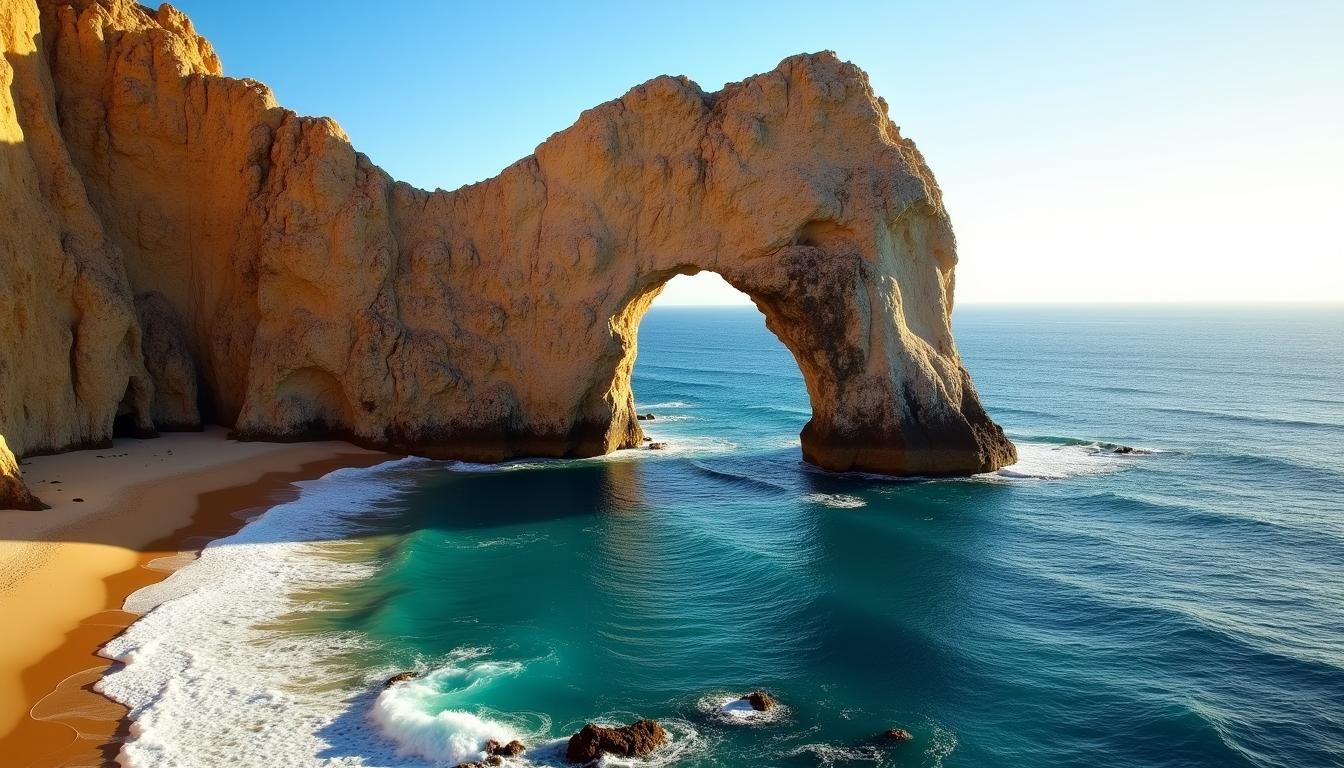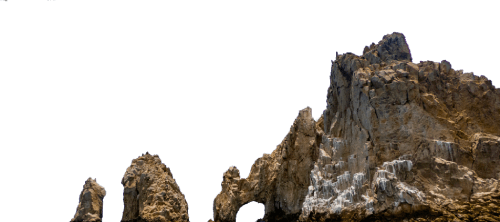
At Mucho Cabo, we’re passionate about revealing the hidden gems of Cabo San Lucas, and few landmarks capture the region’s raw beauty and geological drama like El Arco—the iconic Arch of Cabo San Lucas. Rising majestically at the southern tip of the Baja California Peninsula, this natural marvel is more than a postcard-perfect backdrop. It’s a gateway to history, ecology, and adventure. Let’s dive into what makes this formation so extraordinary.
Carved by nature over 30 million years, the Arch of Cabo San Lucas is a testament to the relentless forces of tectonic shifts, volcanic activity, and erosion. This granite sentinel marks the precise meeting point of the Pacific Ocean and the Sea of Cortez, creating a stark contrast between the tranquil turquoise waters of the latter and the Pacific’s rugged waves.
The arch itself is part of a larger formation known as Land’s End (Finisterra), which includes dramatic cliffs, hidden coves, and secluded beaches. Its jagged silhouette is best appreciated from the water, where the interplay of light and shadow reveals its intricate textures.
Long before it became a bucket-list destination, El Arco served as a critical navigational marker for 16th-century explorers traversing the perilous waters of the Baja Peninsula. Spanish galleons and merchant ships relied on its imposing profile to avoid offshore hazards.
The area also has a swashbuckling past: its labyrinth of sea caves and sheltered bays provided ideal hideouts for pirates like Thomas Cavendish and Francis Drake. These buccaneers ambushed treasure-laden ships passing through the region, leaving behind tales of buried gold and maritime intrigue.
The Arch isn’t just visually stunning—it’s an ecological crossroads. The convergence of two distinct marine ecosystems fosters unparalleled biodiversity:
This ecological richness underscores why protecting Cabo’s natural wonders is vital.
Tours fill quickly during peak seasons (winter and spring break). Reserve online through reputable operators.
Keep your camera ready for these frequent visitors:
- Sea Lions: Colonies bask on rocks near the Arch, barking and splashing.
- Whales: Humpbacks and gray whales migrate past Cabo from December to April.
- Pelicans: Watch them dive-bomb for fish in the Sea of Cortez.
As part of the Cabo San Lucas Marine Reserve, the Arch benefits from protections that limit fishing and development. Visitors can contribute by:
- Avoiding single-use plastics.
- Respecting wildlife distances (no feeding or touching).
- Supporting eco-conscious tour operators.
El Arco isn’t just a rock formation—it’s a symbol of Cabo’s duality. Here, desert meets ocean, history meets modernity, and adventure meets tranquility. Whether you’re kayaking beneath its shadow, snorkeling in its crystalline waters, or simply marveling at its grandeur from a sunset cruise, the Arch invites you to connect with nature’s artistry.
At Mucho Cabo, we believe destinations like this remind us why exploration matters. So come witness El Arco’s timeless beauty, and let it inspire your own Cabo story.
Ready to explore? Share your Arch of Cabo San Lucas experiences with us using #MuchoCabo—we’d love to feature your adventures!
Sources: Los Cabos Guide, Mexican Routes, Cabo Visitor
